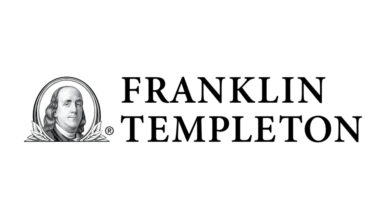Exploring the Benefits of Joining LA Fitness: A Comprehensive Guide

Introduction to LA Fitness
Are you looking for a gym that offers everything you need to achieve your fitness goals? Look no further than LA Fitness! With state-of-the-art equipment, knowledgeable staff, and a wide range of classes and amenities, it’s no wonder why so many people choose to join this popular fitness chain. In this comprehensive guide, we’ll explore all the benefits of joining LA Fitness and offer tips on how to make the most out of your membership. Get ready to take your fitness journey to new heights with LA Fitness!
The many benefits of joining LA Fitness
Joining LA Fitness comes with numerous benefits that can help you achieve your fitness goals. First and foremost, LA Fitness offers a wide range of equipment for cardio, strength training, and functional workouts. With over 700 locations across the United States and Canada, it is easy to find an LA Fitness gym near you.
In addition to their state-of-the-art facilities, LA Fitness also provides a variety of group exercise classes such as yoga, cycling, dance aerobics and more. These classes offer a fun way to workout while providing accountability through support from both instructors and peers.
LA Fitness also has personal trainers available for those looking for extra guidance in achieving their fitness goals. Personal trainers provide one-on-one coaching on exercises that are tailored towards specific needs or limitations.
Moreover, joining LA Fitness grants members access to amenities like saunas and swimming pools which offer great ways to relax after a tough workout session. In some locations, there are basketball courts where players can have fun while getting fit.
Finally yet importantly becoming an LA Fitness member means being part of its supportive community who share similar aspirations towards health improvement meaning members get motivated by each other’s dedication while receiving encouragement from staff too.
How to get the most out of your LA Fitness membership
To get the most out of your LA Fitness membership, it’s important to take advantage of all the features and amenities available at the gym. One way to do this is by attending group fitness classes. Whether you’re into yoga, cycling, or strength training, there are plenty of options for every fitness level.
Another way to maximize your membership is by utilizing personal trainers. They can help create a personalized workout plan tailored to your specific goals and needs. Additionally, they can provide guidance on proper form and technique during workouts.
Equipment selection is also key in getting the most out of your LA Fitness experience. With an array of machines, free weights, and cardio equipment available, it’s important to mix up your routine and switch between different types of exercise throughout each visit.
Don’t forget about recovery! Taking time for stretching or using foam rollers after a workout can greatly improve flexibility and reduce muscle soreness. And if you need some relaxation after a tough workout session? Take advantage of LA Fitness’ sauna or steam room facilities – perfect for unwinding those muscles post-workout!
What to expect from your first visit to LA Fitness
Walking into a new gym for the first time can be intimidating, but at LA Fitness, you’ll feel welcomed and supported from the moment you step inside.
Upon arrival, you will likely be greeted by a friendly staff member who will help you check in and provide a tour of the facility. They’ll show you where everything is located, including locker rooms, showers, cardio machines, weights area and more.
Before starting your workout routine at LA Fitness it’s important to know that there are rules for safety reasons. For instance; avoid wearing open-toed shoes on equipment or hanging towels on them after use as they may cause an accident.
If group fitness classes interest you then don’t forget to ask about their schedules so that attending your favourite class becomes easier than ever! The instructors here are highly trained professionals who offer various types of workouts such as yoga classes or high-intensity interval training (HIIT) sessions.
Expect to have a great experience at LA Fitness during your first visit. The environment is supportive yet challenging enough to achieve every goal set before stepping foot inside this iconic institution!
Conclusion
Joining LA Fitness can be a game-changer for anyone looking to improve their physical health and overall well-being. With state-of-the-art facilities, experienced trainers, and an array of classes and programs available, LA Fitness has something to offer everyone.
The benefits of joining are numerous – from improved fitness levels, stress reduction and weight loss to increased energy levels, self-esteem and confidence. By incorporating regular exercise into your lifestyle with the help of LA Fitness, you will not only look better but feel better too.
When it comes to getting the most out of your membership at LA Fitness, remember that consistency is key. Make use of all the resources available including personal training sessions or group classes that align with your goals.
And as you embark on this exciting journey towards a healthier lifestyle through your membership at LA Fitness, remember that every small step counts towards making progress. So take things one day at a time while enjoying the journey along the way!
So what are you waiting for? Sign up today and start reaping all these amazing benefits!



